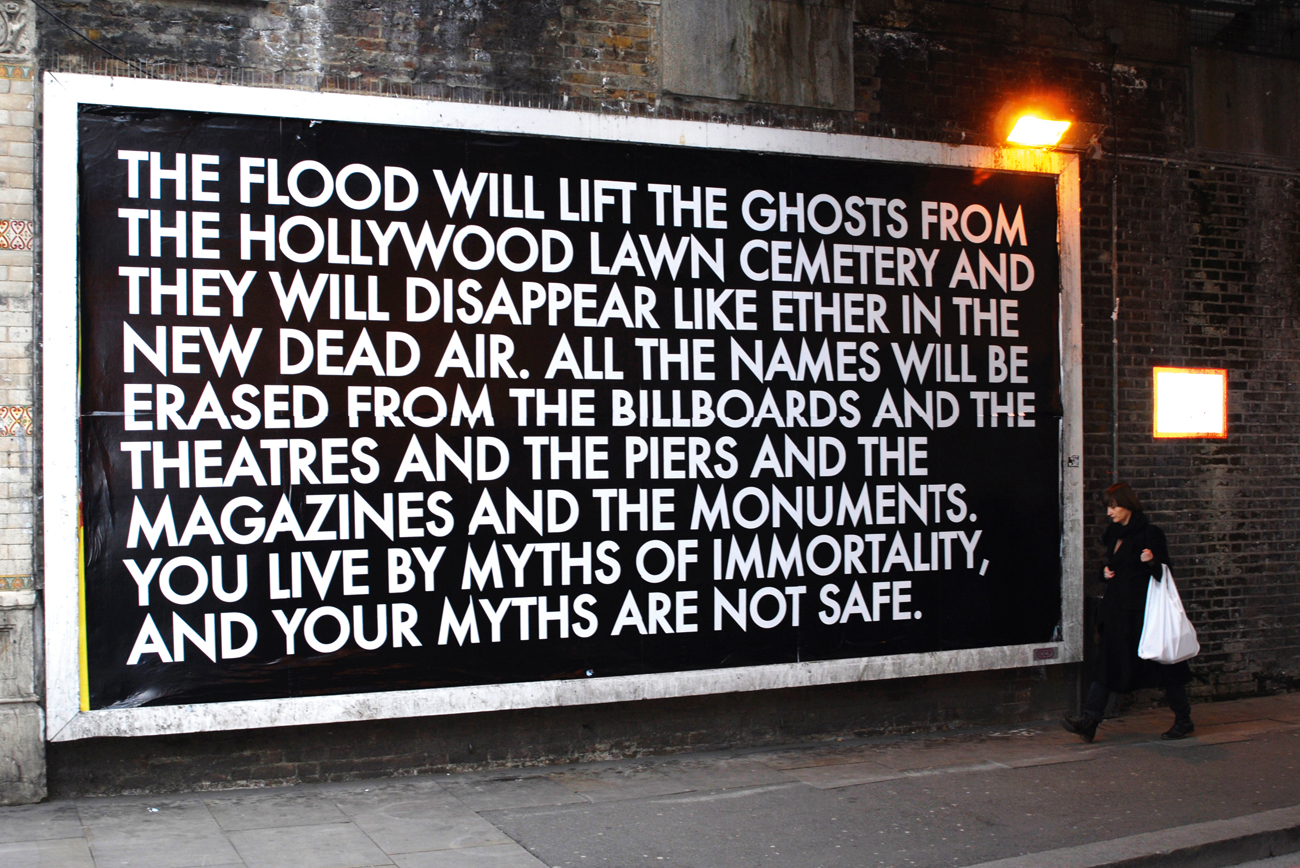Purple Magazine
— F/W 2011 issue 16
Robert Montgomery
 The People You Love Become Ghosts Inside of You. recycled sunlight poem, installed at the De La Warr Pavilion, 2010
The People You Love Become Ghosts Inside of You. recycled sunlight poem, installed at the De La Warr Pavilion, 2010
about his poetic / political art
I started making billboards in Edinburgh and Glasgow back in 1994, when I was a student. Guy Debord inspired a language for which ideology and poetry were inseparable. Some of my billboards are anti-Capitalist and overtly political, such as THE SPECTACLE OF ADVERTISING. Some are Romantic and personal, like MEMORIES OF MEDITERRANEAN FLOWERS IN THE STREETS OF NEW YORK. But they all have a pathos and melancholy in their underlying tones. I want to bring pathos and melancholy to the street, on billboards normally used to sell Tommy Hilfiger Jeans and Nespresso coffeemakers in a tone of voice at once upbeat and vacuous.
